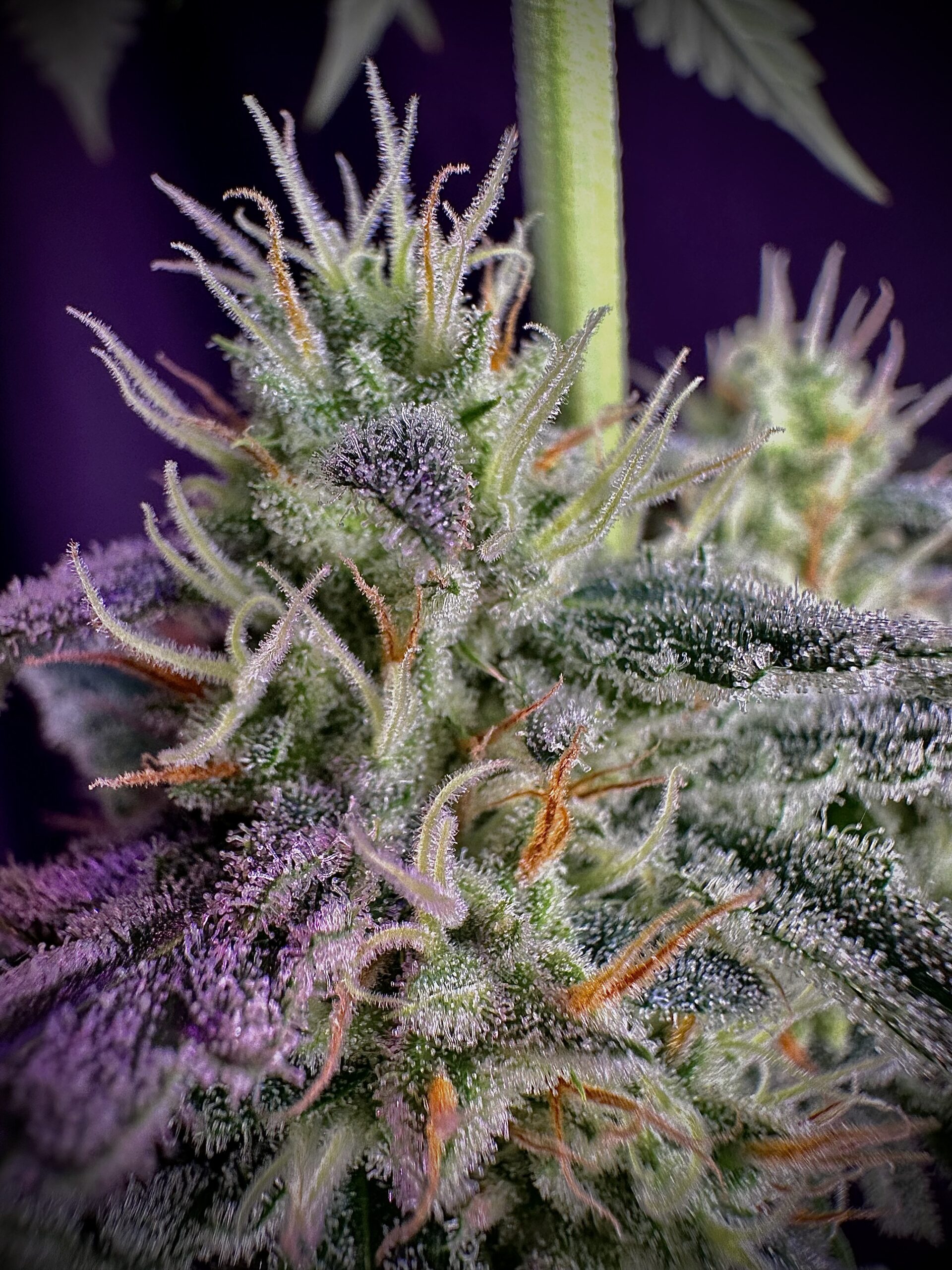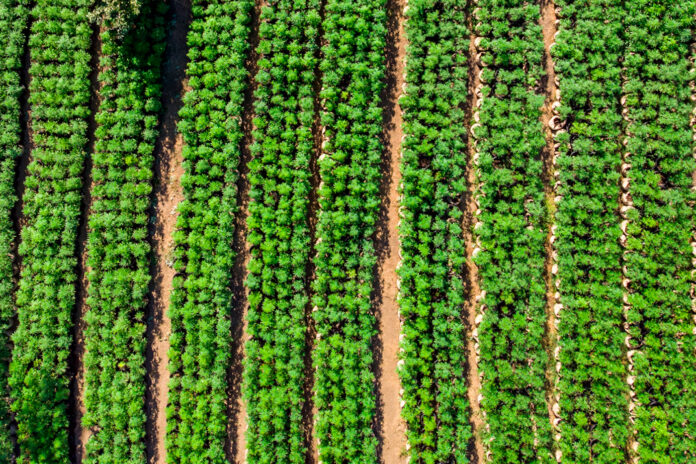
In the world of cannabis cultivation, the vast majority of varieties are photoperiod sensitive. This means they rely on regular intervals of light and dark to grow, with photosynthesis under the sun or lamps responsible for maturation throughout the plant’s life cycle from seedling through vegetative stage and eventually, flowering.
Autoflower cannabis bucks this trend, instead flowering after a certain amount of time regardless of light cycles. These cultivars are considered in many ways to be easier to grow than photoperiodic strains, and they typically reach harvest in less time.
Autoflower cannabis rose to prominence in Europe in the later part of the 20th century, but it’s been enjoying a bit of a renaissance thanks to advances in breeding over the last two decades. More commercial cultivators are considering autoflower strains, intrigued by their efficiency and quick turnaround time.
“The popularity of autoflowers is growing rapidly—it seems to be growing in tandem with the THC content, which can reach the low-30s now,” said Ben Lind, chief science officer and co-founder at Humboldt Seed Company, a prominent provider of cannabis seeds around the world.
Lind adds that while autos may not have always been held in the same regard as photoperiod varieties, that will soon change.
“Autoflowers will not only command the same respect as photoperiods, but they have the potential to replace photoperiod seeds and clones,” he said. “Using autos simplifies cultivation and allows facilities to get rid of nursery support space like the indoor veg room.”
While autoflower cannabis seeds are increasingly in demand, they have their pros and cons just like anything else. If you’re curious about autos and how they may benefit your bottom line, read on.
What are autoflower seeds?
As touched on earlier, autoflowers grow with the season, not the light cycle. Consider them the annuals of the cannabis world.
To understand autoflowers, one must start by understanding the history of cannabis genetics. There are three main species of marijuana plants: cannabis sativa, cannabis indica, and cannabis ruderalis.
Sativas are native to warmer climates, particularly throughout the equatorial regions and Southern Hemisphere. Indicas were initially found in cooler, mountainous climates such as the mountains of India, Pakistan, and Nepal. These two species make up the majority of commercial cannabis strains on the market today.
Cannabis ruderalis originated in Russia and Siberia, where harsh winters and long periods of daylight forced the plant to evolve to survive. Ruderalis started to flower automatically after a certain amount of time, regardless of light cycles or temperature. However, buds from this species were often less potent and not considered commercially desirable.
In the late 1970s and early ‘80s, breeders in the Netherlands began experimenting with crossing auto-flowering ruderalis with indica and sativa marijuana plants. By the dawn of the new millennium, the first North American autoflowers began to emerge.
A breeder known as The Joint Doctor discovered a Mexican ruderalis landrace and decided to cross it with Northern Lights, a cannabis indica variety. Dubbed Low Ryder due to its short stature, the strain marked a new era for autoflowers around the world thanks to its ability to produce desirable levels of cannabinoids with a relatively short flowering time.
“We started growing and breeding autos back in the early 2000s, but didn’t see a lot of promise until pretty recently,” Lind explained. “It has been a long road to get to the point we are at now with varieties like Sour Apple, Mint Jelly, and Emerald Fire OG that provide all the beneficial qualities of each strain and also the added bonus of being autoflowering.”
Fortunately, there are now plenty of options to buy autoflowering seeds from a variety of reputable breeders. Humboldt Seed Co., Fast Buds, and Dutch Passion offer a wide catalog of unique strains. These genetics are capable of producing a final product with robust THC levels and terpene profiles.
At the 2023 American Autoflower Cup, the first-place sativa entry strain Strawberry Gorilla tested at over 29 percent THC, an impressive feat even by photoperiod standards.

“The results were mind-boggling,” said Ryan Gageby, a.k.a. Freegrow8, the cultivator behind the award-winning Strawberry Gorilla, which was bred by Fast Buds. “It really shows you how far autoflowering plants have come. It was a huge honor to win and to bring more awareness to growing autoflower seeds.”
Autoflower pros: predictability and rapid life cycle
There are several reasons why autoflower seeds are beneficial to cultivators. In addition to their ease of use, auto seeds tend to be more stable.
“The main advantage of autoflowers is predictability,” said Lind. “Since autoflowers don’t rely on light cycles to control flowering, you can plant your seeds and reliably harvest 70-100 days later, creating a constant throughput system that’s incredibly efficient and very attractive to large-scale commercial cultivators.”
As touched on by Lind, another top selling point of autoflower seeds is the rapid rate of maturation. The time from seed to harvest is incredibly fast—sometimes as little as seven weeks for the entire life cycle.
By comparison, photoperiod strains typically take anywhere from 12-18 weeks to reach maturity. This means that growers can potentially harvest twice as many autoflower plants in a growing season if they cultivate outdoors.
“One of the main draws for me with autos was the quick life cycle,” said Gageby. “That’s what got me interested in the first place. Cannabis is time-consuming overall, but autos are definitely ideal time-wise.”
Autoflower cons: lower yields and no clones
Autoflowering plants are attractive thanks to their quick turnaround and reliability, but they do have their drawbacks. One of the main ones, Lind noted, is the smaller size of mature plants, typically offering a smaller yield overall versus photoperiod cannabis.
“These are not multi-pound plants,” Lind said, who also noted the size means more are necessary to fill a garden space. However, this is often attractive for craft or home growers.
Lind also called out the lack of control over the vegetative state, something that can be regulated in photoperiod cannabis to potentially produce bigger plants prior to harvest.
“It’s like lighting a fuse,” he said. “Once it’s lit, it’s on a one-way track to the finish and you can’t do anything to change the timing.”
Many people wonder if you can clone autoflowering plants, and just like mules, the answer is no.
“One drawback of autoflowers is the fact that it’s not possible to clone from mother plants, so if you find a cultivar you really like, you have to hope all of the seeds are equally viable,” Gageby explained.
While cloning may not be an option, the stability and quality of autoflower seeds have steadily increased over the years making them a feasible option for cultivators.
What are autoflowering seeds—final thoughts
Autoflower cannabis has come a long way since its origins as low-potency ruderalis. With quick flowering time, reliable genetics, and a relatively short life cycle, autoflower seeds have exploded in popularity over the last few years.
And while they may have drawbacks like lower yields and lack of cloning ability, Lind believes the new generation of autoflower genetics is breaking the mold in a big way.
“The autos of today are not your parent’s autos,” he said. “We’ve identified the genetic sequence that defines an autoflower, which has allowed us to migrate our photoperiod strains to autoflowers without losing the original, desirable traits. We do this naturally in a targeted way using marker-assisted breeding. We’re still doing our breeding work via natural selection, but it just happens a lot faster with modern practices.”
